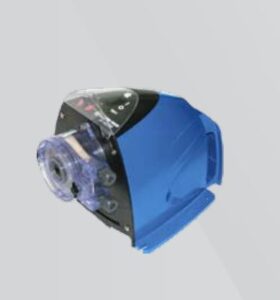 Peristaltic metering pump by John Brooks Company serves customer’s boiler
Peristaltic metering pump by John Brooks Company serves customer’s boiler
June 14, 2021 REDWIRE is news you can use from leading suppliers. Powered by FRASERS.
Posted by John Brooks Company Limited
John Brooks Company Limited: Fluid Handling Solution providers since 1938. For over 80 years, John Brooks Company has pr... Read more
Subscribe
Free REDWIRE e-newsletter

A peristaltic metering pump in the Pulsafeeder Chem-Tech XP Series
John Brooks Company Limited has satisfied businesses with fluid-handling products for more than eight decades. One example: a customer that needed a superior pump to inject an anti-scaling chemical into its boiler. The John Brooks Company team recommended a peristaltic metering pump from the Pulsafeeder Chem-Tech XP Series.
Among the benefits that the XP pump brought to this company: optimal chemical injection; less downtime; lower service and maintenance costs; higher boiler efficiency; and higher safety.
No valves to clog
The customer was using a solenoid-activated diaphragm metering pump for this application. But the check valves on the pump head were clogging, which caused the pump to lose its prime and its ability to provide a suction lift of the chemical from its container. This prevented injection of the proper amount of anti-scalant into the boiler water, causing substantial scale to build up over time. This reduced the boiler’s efficiency, which hiked operating and maintenance costs while threatening safety. For a better option, the company contacted John Brooks Company.
After discussion the situation with the customer, John Brook Company’s application expert suggested using a peristaltic metering pump. Each one has a seal-less design and can operate with no check valves in the pump head – eliminating the clogging issue. The Pulsafeeder Chem-Tech XP model has a low maintenance cost due to having only one tube; it is also self-priming and offers dry-run capabilities.
With a peristaltic metering pump, a rotating show passes along the length of the hose, which creates a seal between the suction and discharge sides. As the rotor turns, the sealing pressure moves along the tube and pushes the product into the discharge line. The hose recovers when the pressure releases, creating a vacuum that draws the product into the suction side.
The customer installed the XP model and saw a positive return on investment in less than ten months – largely due to the fuel savings and the higher boiler efficiency. Another reason: a maintenance person hired to unclog or replace valves every month would have cost $100-$150 an hour.
For more information, contact John Brooks Company.
Share
Posted by John Brooks Company Limited
John Brooks Company Limited: Fluid Handling Solution providers since 1938. For over 80 years, John Brooks Company has pr... Read more
